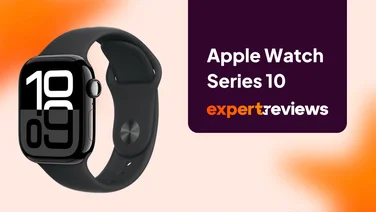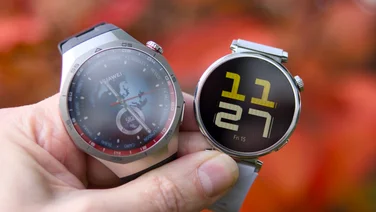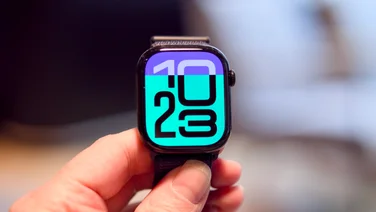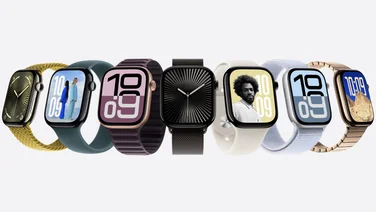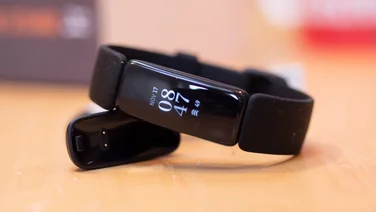To help us provide you with free impartial advice, we may earn a commission if you buy through links on our site. Learn more

- Good-looking watch
- Commendable focus on wellbeing
- Physical button is a big improvement
- Several features have been axed
- Lousy GPS
- The original Sense is now much cheaper
Fitbit’s most expensive smartwatch, the Fitbit Sense (£189) arrived at a difficult time for consumer tech. Launching in September 2020, it arrived just in time for people to get used to being outside again after months spent cooped up with minimal exercise.
It was helpful that it zoned in on mindfulness, then, and it became a bit of a fan favourite. Two years on, with a public that’s largely forgotten about the stresses of the pandemic, can lightning strike twice?
Fitbit Sense 2 review: What you need to know
Unfortunately, it doesn’t seem as though Fitbit has come up with many new ideas for its flagship wearable in the two years since the first-generation model launched.
It’s slightly smaller and lighter (though I can’t emphasise “slightly” enough), and comes with continuous electrodermal activity (EDA) measurement, which is an upgrade on the original’s, which had to be initiated every time you wanted a stress readout. It also replaces the capacitive sensor with an actual physical button to press – something I’m delighted by.
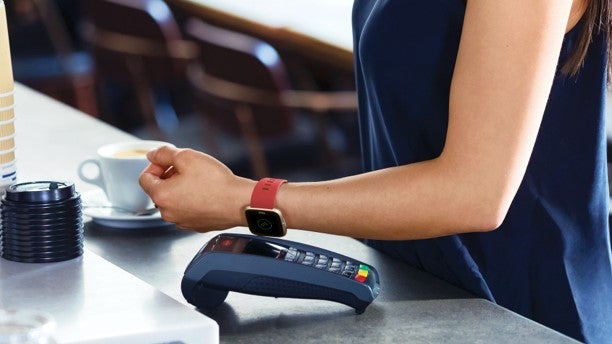
Otherwise, the additions are software-based and unavailable at launch. Google’s $2.1bn acquisition of Fitbit means we’ll be getting turn-by-turn directions via Google Maps at some point and, better still, it will adopt Google Wallet as an alternative to the poorly supported Fitbit Pay.Those are all good things, but bafflingly, as with the Versa 4, Fitbit has seen fit to take away a whole bunch of useful bits and pieces. Downloading third-party software via the App Gallery is no longer supported, you can’t use the internal storage for music and you can’t even control on-phone audio via music controls.
Perhaps because of this, the built-in Wi-Fi is disabled, which means firmware updates are going to be delivered painfully slowly via Bluetooth. Most bafflingly of all, Google Assistant – introduced for the original Sense – has been taken away, leaving us only with arch-rival Alexa.
Some of these things may come back via updates, and in isolation none of them is a deal breaker. Still, at launch, the Fitbit Sense 2 is a curiously empty product compared to its predecessor – never a good thing on a device with a three-figure price tag.
READ NEXT: Our full roundup of the best smartwatches
Fitbit Sense 2 review: Price and competition
At least, given the few differences between generations, Fitbit has seen fit to introduce a modest price cut to those three figures. While the original Fitbit Sense retailed for £300 at launch, the Sense 2 comes in at £270. However, in the two years since the Sense launched, its price has gradually dipped, and you can now pick one up for under £200.
That’s not the only thing making the Fitbit Sense 2 a bit of a tough sell in these belt-tightening times. Not only can you get the new entry-level Apple Watch SE for £259, but the Garmin Forerunner 55 undercuts it considerably at £180.
Further competition comes from Fitbit itself. You can now get a Charge 5 for £170 or the newly released Fitbit Versa 4 for £200, although it comes with the same problems I’m about to highlight with the Sense 2.
Fitbit Sense 2 review: Design
As with the Versa 4, there’s only one real design change worth talking about with the Fitbit Sense 2, and that’s the return of the honest-to-goodness physical button.
Actually, in this case, it’s an introduction rather than a return, as this is only the second generation of Sense. But it’s extremely welcome all the same, feeling far more consistent in use than the capacitive sensor of the old version.
Like the Versa 4, it’s also lost a bit of weight, but it’s really not the kind of thing you’d notice unless you had both side by side, and even then you’d have to look carefully. While the old Sense was 40.48 x 40.40 x 12.35mm, the newer model is 40.5 x 40.5 x 11.2mm. The slimmer profile means that the Sense 2 is now six grams lighter at a mere 40g.
But Fitbit could make it more comfortable still if it offered straps that weren’t so darned awkward to put on. Maybe I’m in the minority here, but I find the silicone band enormously difficult to wear for extended periods – either comically loose or uncomfortably tight – and that means I have to go through the song and dance of putting it on way more often than I’d like. You have to snake the band through two tight gaps and then fasten it shut with a stud that pushes against the vein. It makes me wince just writing it down.
In the company’s defence, the fact it has two straps of different lengths in the box is convenient (even if it’s environmentally dubious), but once again I find myself questioning whether two bad straps are better than one.
It’s kind of a moot point, given you can buy a wide variety of first- and third-party straps if you’re equally unimpressed. But really, Fitbit: what’s wrong with an old-fashioned buckle?
For what it’s worth, when on the wrist it looks great: it’s a stylish wearable with a slightly curved screen, and the sharp and vibrant AMOLED screen is a joy to behold. The bezels are thick, but they’re mostly disguised due to the clever use of black backgrounds on the majority of the available watch faces.
Fitbit Sense 2 review: Performance
You can’t talk about said watch faces without bringing up the biggest disappointment with the Fitbit Sense 2. While the first Sense had access to the App Gallery for adding additional features and watch faces to your wearable, this has been taken away from both the Sense 2 and Versa 4 with no explanation.

To be clear, it had nowhere near as much as is available for the Apple Watch or Wear OS devices, but it was something to build on, with the likes of Uber and Starbucks having Fitbit apps. These aren’t compatible with the Sense 2, and it looks like Fitbit has given up on it, which is a shame, and makes the Sense 2 a downgrade from its predecessor.This isn’t the only baffling cutback. You can’t use the internal storage for offline music, nor can you use the watch as a remote control for audio on your phone. There’s no Google Assistant this time, leaving only Alexa – weird when Google now owns Fitbit – and Wi-Fi is present, but disabled with no plans for the company to enable it.
All of these things are what you’d call minor cuts, and there’s even a chance that some will come back via software updates. But taken together, it’s hard not to be a bit insulted by what Fitbit is offering here, especially considering the limited improvements on offer.
READ NEXT: The best sports watches available right now
Let’s talk about those improvements. First off, we’re getting better Google integration with Google Maps and Google Wallet. Both of these are huge, but especially the latter, given how poorly supported Fitbit Pay is in the UK. But at the time of writing neither had arrived, so it doesn’t help the Fitbit Sense 2’s appeal much in the here and now.

Then there’s the big upgrade: continuous EDA measurement. EDA, or electrodermal activity, is a proxy of how stressed you are, and it’s the Sense 2’s secret weapon, making a wearable that’s as much about mind as it is about body. EDA was present in the original Sense and quite nicely implemented, but here it’s upgraded to give you readings throughout the day.On the original version, you take a measurement by placing your hand over the whole watch so it’s in contact with the stainless steel bezel. You leave it there for a couple of minutes and you get a Stress Management score, which you can then use to calm yourself via the built-in mindfulness apps. That’s still here, but now the watch will also attempt to get a proxy for this by passively measuring skin temperature and heart rate to know when you’re stressing out.
It’s a nice improvement, but I’m not sure it’s worth the extra £70. All this is really doing, in effect, is saving you the hassle of remembering to take a reading, and I kind of suspect most people know when they’re stressed already (hint: it’s usually at a time when they can’t take a break for breathing exercises!). Yes, tracking stress over time is probably helpful if you’re trying to actively improve your wellbeing, but that can be done with the original Sense for less money, as long as you remember to take a reading or two.
On top of this, an old familiar problem with Fitbit is here and – in my experience – worse than ever. Fitbit devices have always played somewhat fast and loose with GPS accuracy, and the Sense 2 fares really poorly here.
Not only would it frequently fail to get a location lock upon starting a run (something I only managed to fix by loading up the Fitbit app on the company’s advice – a ludicrous fix for a device with its own dedicated GPS sensor), but it badly overestimated the distance, too.
A run as measured by the brilliantly accurate Garmin Forerunner 255 was 7.69km. Fitbit’s estimate? 8.61km – nearly a whole kilometre out.
You don’t have to look hard to figure out why it’s so wrong. Take a look at the route it thought I took, bearing in mind these are streets with houses on either side. It’s comically bad.
In Fitbit’s defence, even Garmin isn’t flawless here, and still has you trailing into people’s gardens if you zoom in closely enough. But there’s no denying that it’s a lot better than Fitbit:
In fact, the worrying thing about the Fitbit Sense 2’s GPS is that it actually fared better at parkrun when it failed to get a GPS lock. It ended up measuring the 5km course at 5.15km, which is acceptably within the margin of error (Garmin managed a GPS lock and measured the course at 5.09km, for comparison’s sake).
Heart rate fared better. Compared to a chest strap’s measurements, the Fitbit wasn’t too far off, measuring an average heart rate of 161bpm on the longer run, compared to the chest strap’s 154bpm. This higher average was down to bigger spikes, with Fitbit claiming to measure 178bpm, while the chest strap maxed out at 174bpm.
Does all of this matter to casual exercisers? Probably not that much as long as it’s consistent with itself, and the doubling of sports modes from 20 to 40 is certainly welcome for those who like to dabble in different forms of exercise.
In fact, given the aforementioned deficiencies of the GPS, the more basic exercises are probably better. But the usefulness of dedicated modes for each exercise is debatable, as it is for all of Fitbit’s rivals. If all they’re tracking is heart rate and wrist movements, is having a dedicated mode for kickboxing or tennis any better than a generic exercise option?
To end on a positive, one of Fitbit’s trump cards remains the app, which for my money is one of the best in the game. It’s user-friendly, easy to understand and offers a good sense of competition if you know other users ensconced in the same ecosystem.
READ NEXT: We help you choose the best Apple watch for your needs
Fitbit Sense 2 review: Verdict
As with the Versa 4 (£200), Fitbit has succeeded in making a product that’s both quite likeable and impossible to recommend. It’s a good-looking smartwatch with a decent feature set and one of the most accessible accompanying apps around.
But so was the original Fitbit Sense (£189), which had more features and is now available for about £100 less. Granted, there’s no guarantee it will get the additional Google apps, its capacitive button is pretty dreadful, it only supports half the exercises and it doesn’t have all-day EDA measurement, but it’s undeniably better value.
If you still buy the Fitbit Sense 2 knowing these limitations, you won’t exactly be disappointed with it. But stripping back features without explanation is never a good look when you’re expecting someone to spend the best part of £300 on your product. As such, it’s nice but impossible to recommend – at least for the time being.



